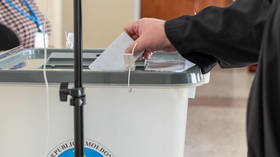High schools to drug test using company of school president's brother

Three Catholic schools in the Cleveland, Ohio area will begin mandatory drug testing using students’ hair in the next school year. The CEO of the company performing the testing is the brother of one of the school’s presidents.
Gilmour Academy, St. Edward High School, and St. Ignatius High School announced the new policy to students and their parents on Monday. The schools will use Psychemedics Corporation for the drug tests on hair follicles. Psychemedics president and CEO Raymond Kubacki is the brother of St. Edward president James Kubacki.
K.C. McKenna, vice president of admissions and marketing at St. Edward High School, told the Cleveland Scene that the decision to work with Psychemedics came after several years of research led by an internal committee made up of members of the board of trustees, a faculty member, and members of the administration.
“Certainly, Jim knew a little more about the process because of his brother being involved, but his brother being CEO of that company in no way led to us making the decision to use Psychemedics," he said.
“From Day One, I told them this was my brother’s company,” the St. Edward’s president told the Plain Dealer. But in their announcements, the schools made no mention of a connection between anyone at the schools and Psychemedics.
“The short answer is Gilmour was very much aware of that connection from the beginning and it was never an issue,” Gilmour spokesman Devin Schlickmann told the Plain Dealer.
“How we picked the company isn’t of interest to high school boys," St. Ignatius spokeswoman Lisa Metro said. "They’re more interested in how it’s going to play out to them.” Metro also revealed why the committee decided to go with Psychemedics: “They were the only lab with full FDA clearance to do the testing we were looking for,” she added.
The schools said the drug testing is preventative, and not evidence of substance abuse among students, according to a statement on the St. Edward website. “The schools decided to initiate drug testing out of a deep concern for the health and well-being of students,” the statement says. “The primary purpose for this initiative is to give students another reason to say “no” to the pressures of using illegal drugs and to help them remain substance-free. This initiative is simply one more component in our student wellness efforts.”
However, school leaders told The Plain Dealer that the heroin epidemic in Northeast Ohio was the catalyst for implementing the program.
The statement did outline the decision to use hair testing over body fluids like urine or saliva. “Many drugs are undetectable in urine as early as 72 hours after use, whereas they can be detected in hair samples for several months after ingestion,” the statement says. “In addition, it is much more difficult to adulterate or substitute hair samples and collection is much less intrusive, as well as more cost-effective.”
Hair-testing kits cost $39 to $50 each, schools that currently work with Psychemedics told the Scene. All high school students - about 980 at St. Ed’s, 340 at Gilmour, and 1,500 at St. Ignatius - will be subject to testing at the beginning of the 2014-2015 school year, and then random testing will occur throughout the year. The three contracts combined will pay Psychemedics nearly $120,000 for the initial testing alone, the Plain Dealer reported.
According to the St. Ed’s statement, hair testing can detect drug use for up to three months. The timing of the announcement gives students a four-month warning before testing begins. “The only good thing about this is that they announced it this early,” one Ignatius student wrote on the Scene site. “They practically winked at us while saying that the test can detect drugs used up to 3 months prior to it, and the first tests won't begin for 4 months.”
The student also noted, “We were also told that shaved heads would not work as the test can be done with even arm hair...And as a side note, the students will likely just be drinking a lot more.”
Reactions to the new policy have been mixed.
"As long as you're not doing drugs, it's not an issue," St. Edward senior Gavin Bridegum said to WKYC. "It's like one piece of hair, it's not that invasive or anything. It's not a blood test."
“My sons attend SIHS and I don't see this as anything but a positive measure. I am grateful the administration cares enough to be this intrusive. I work in an ER and have seen all too often the result of teenage drug abuse. It's not pretty,” one St. Ignatius parent wrote on the Scene website. “If we can save families the tragedy of this epidemic, I'm all for it. Just because there is money to be made does not in any way indicate that was a motivating factor. This is just another example of the public/media trying to create unnecessary controversy over something.”
"In terms of a privacy issue, I think it might be a little bit too much," parent Diane Erny told WKYC. "Where it's coming from and why?"
The parent of a child who will enroll at St. Ed's in the fall told the Plain Dealer that he supports the decision to conduct drug testing, but wonders about the timing of the announcement. Other families who are against it, but who have already committed to sending their sons to the school, are now in a bind, he said.
Students will not face punishment for a positive drug test, but will receive counseling and other assistance, the St. Ed’s statement said. “Ultimately, this is not designed to be a punitive program; it’s designed as a prevention and intervention strategy. By identifying students at risk, we can work with their parents and health professionals to get them the help they need and re-direct their path.”














